Sanitary flow control valves are designed to meet BPE standards for biopharmaceutical or 3A standards for food and beverage applications. Sanitary control valves are made with materials approved for use in food or pharma industries; are polished to a specified roughness (Ra) finish; and are designed for easy cleanability to prevent contamination. Sanitary valves must meet rigorous standards for hygiene and cleanliness. In addition to biopharmaceutical and food & beverage applications, sanitary valves are used in health & beauty and confectionery industries.
Contact Us to Learn More Download FD Brochure
Equilibar Sanitary Flow Control Benefits
- Wide operating range with a turn down ratio of 200:1 (wider range than traditional valves)
- Sizes for low flow control down to Cv of 1E-6 and high flow control up to Cv of 36
- Controls flow in applications with low DP or with extremely high DP
- Compact size for easier integration
- Easy and inexpensive to maintain in the field
What is a flow control valve?
A “control valve” is a general term for any valve that controls the size of the fluid passageway as a means of controlling flow, pressure, or other process parameters related to flow. By adjusting a positioner or knob, the cross-sectional area of the fluid pathway can be changed to modulate the flow through the valve. As the positioner moves, it changes the “% open” of a valve which changes the flow rate through the valve. Different valve designs have different flow curves for “% open” versus “flow rate.” Flow control valves (FCVs) are used when flow rate is an important process parameter in product outcomes.
Flow control valves are commonly used in closed loop control with a flow meter. The flow meter sends flow rate to a controller, which then sends a command signal to an actuator or positioner to set a specific “% open” of the control valve to keep the flow rate on target. Flow control valves come in many different forms, including globe, butterfly, ball, pinch and diaphragm valves.
Download FD BrochureHow Equilibar Sanitary Flow Control Valves Work
Equilibar sanitary flow control valves are dome-loaded valves with a supple diaphragm that modulates up and down to adjust flow rate. Because they are dome-loaded, a pressurized pilot gas (usually air) is applied to the top of the diaphragm to maintain the setpoint of the process. The Equilibar sanitary FCV works in a control loop with an electronic pressure controller and a flow meter. The novel design allows for an extremely wide operating range and fast response to maintain accurate flow setpoints for critical sanitary applications.
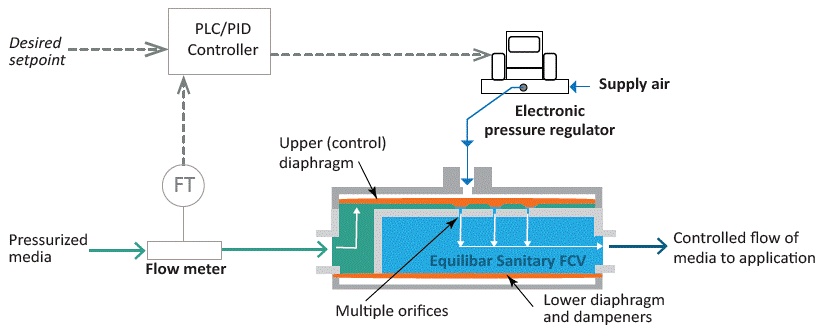
A proportional-integral-derivative (PID) controller monitors input from a flow transmitter (FT) and adjusts the pilot pressure to bring flow under control. An electro-pneumatic (E/P) pressure controller translates the electronic signal from the PID into a pressure signal for the pilot pressure setpoint. Flow is decreased by raising the pilot pressure and increased by lowering the pilot pressure.
Contact Us to Learn MoreEquilibar FDO Sanitary Valves Specifications
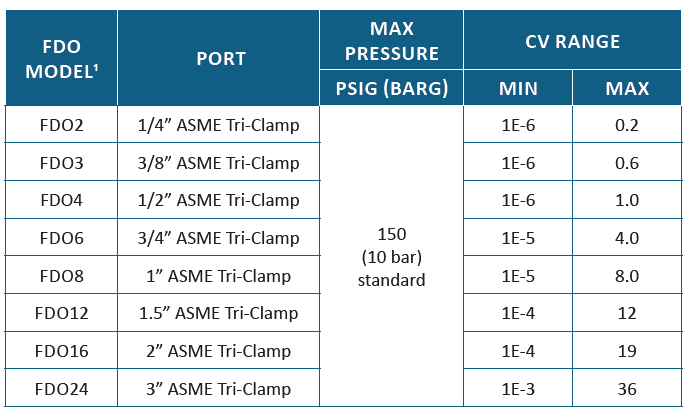
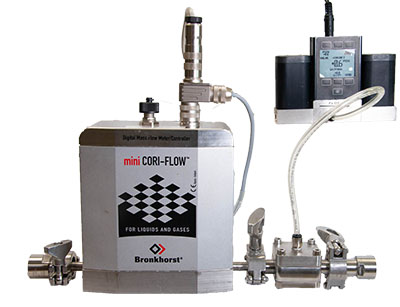
Equilibar FDO4 valve in a flow control loop with an Equilibar EPR-150 electronic pilot regulator and a high resolution flow meter. PID controller not shown
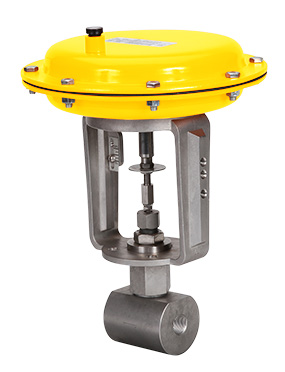
Traditional rising stem flow control valve
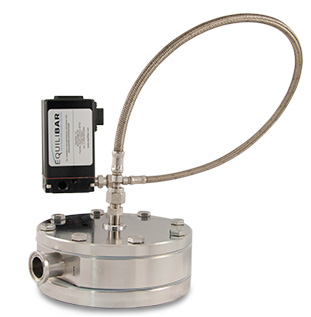
Equilibar FDO sanitary valve with electronic pilot for closed loop Automated Flow Control


